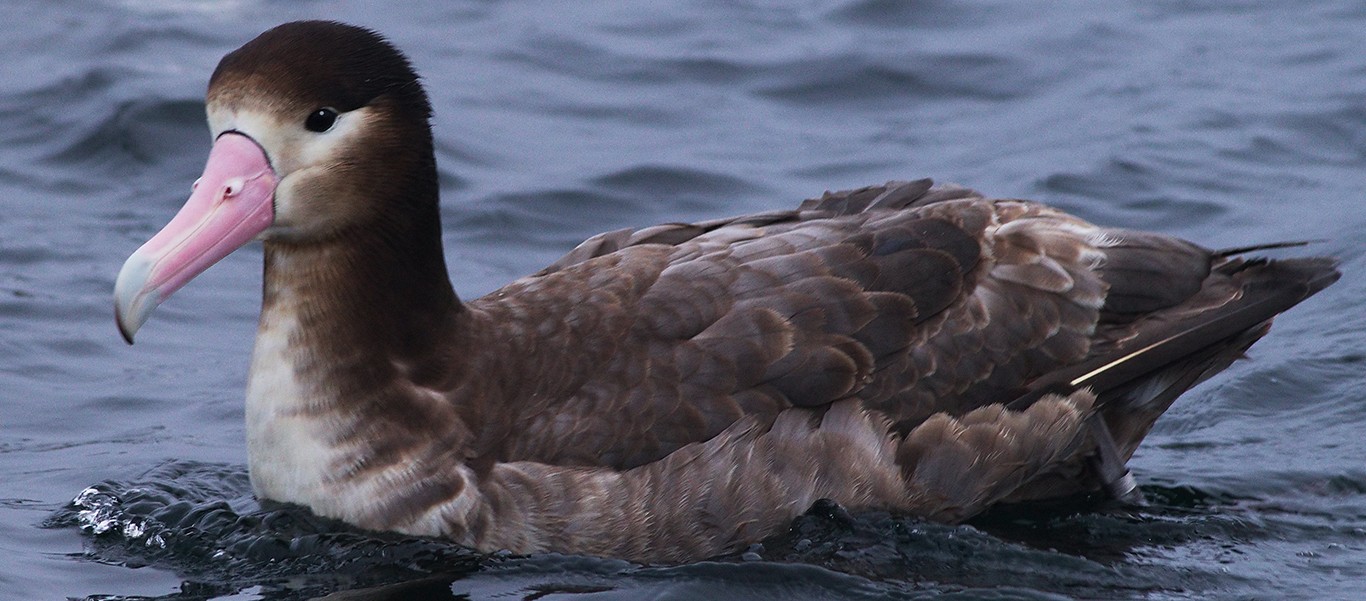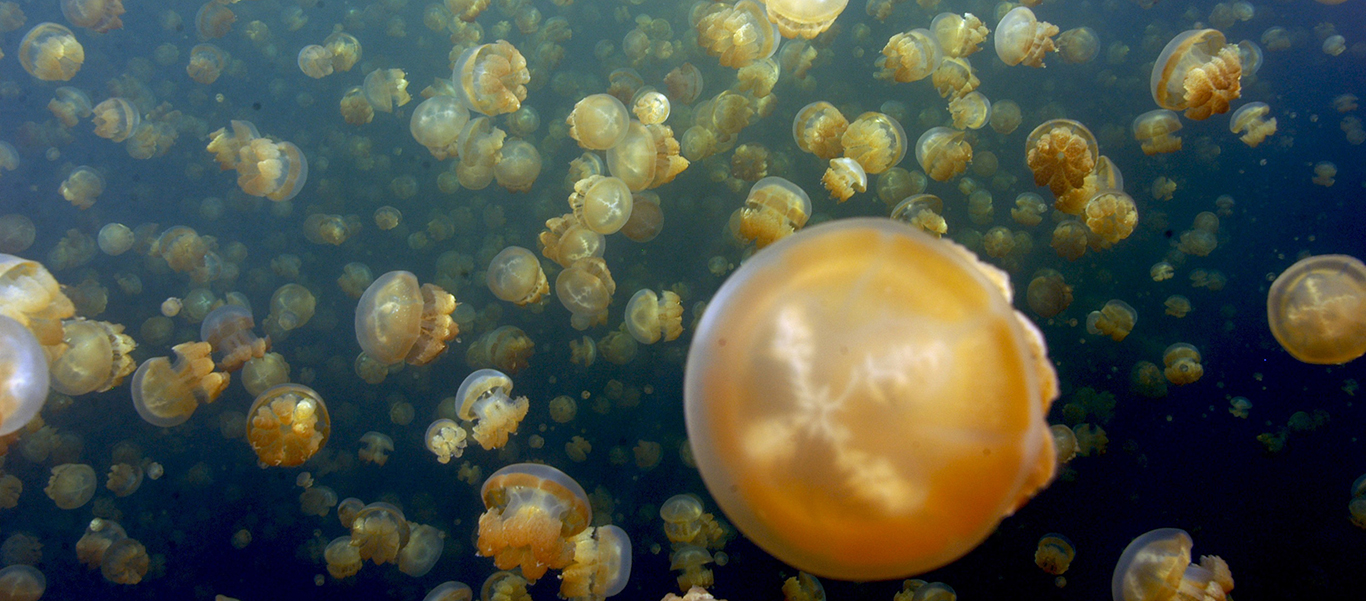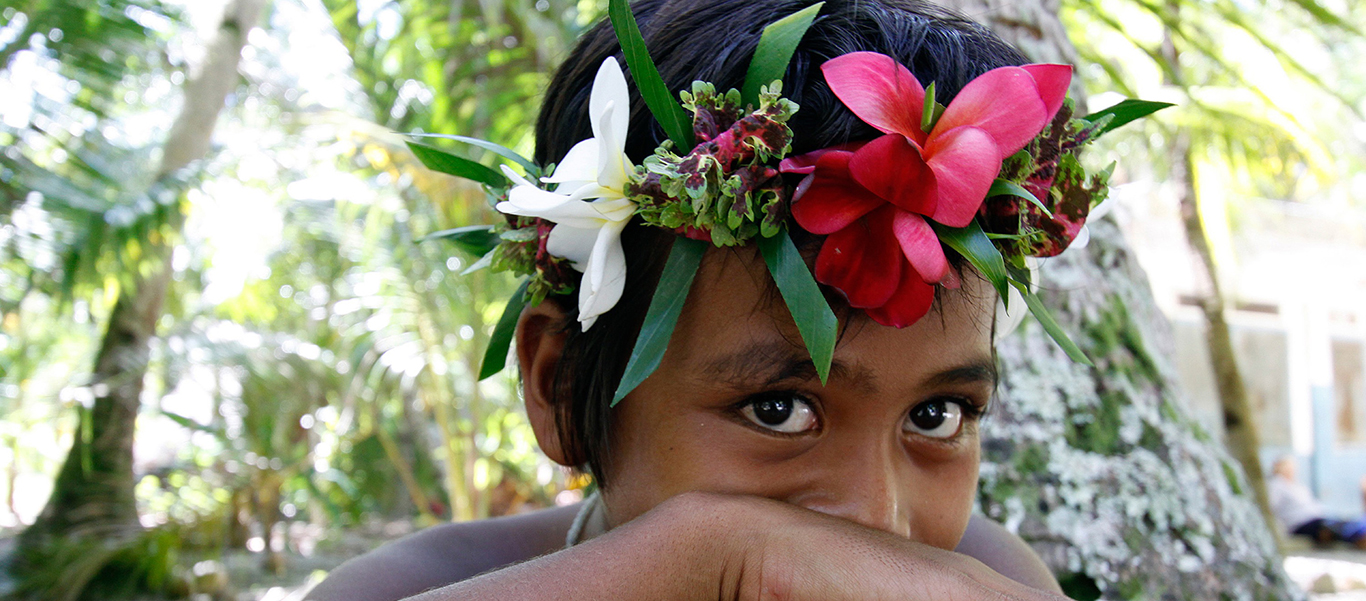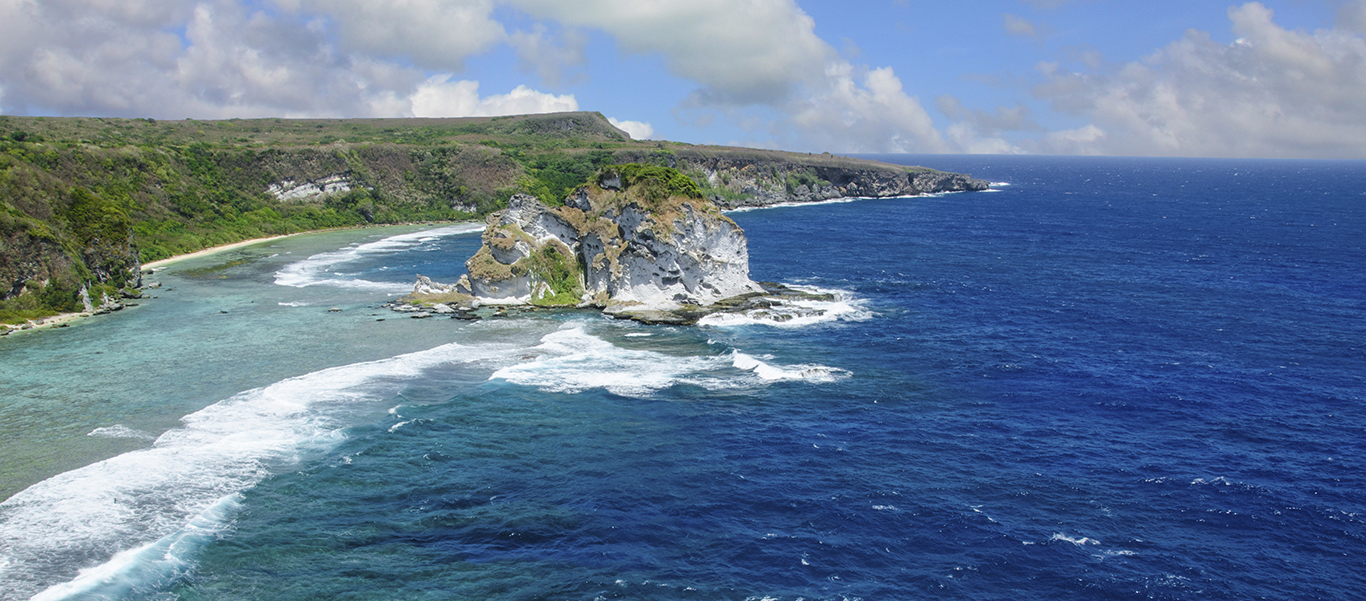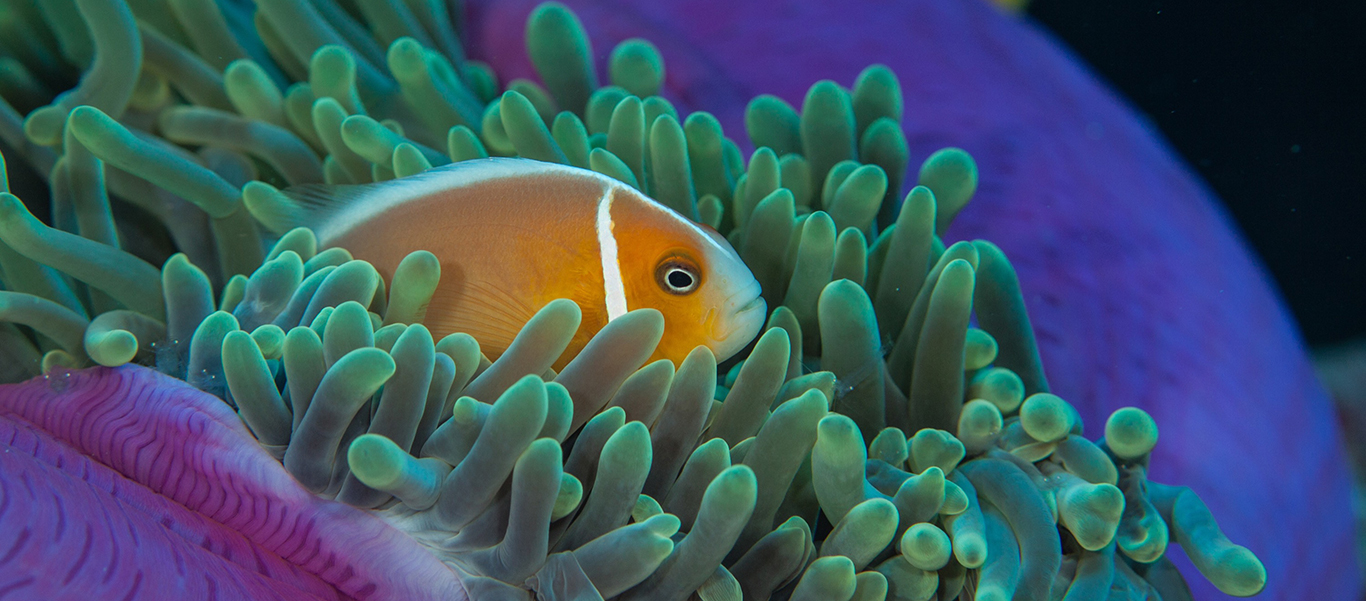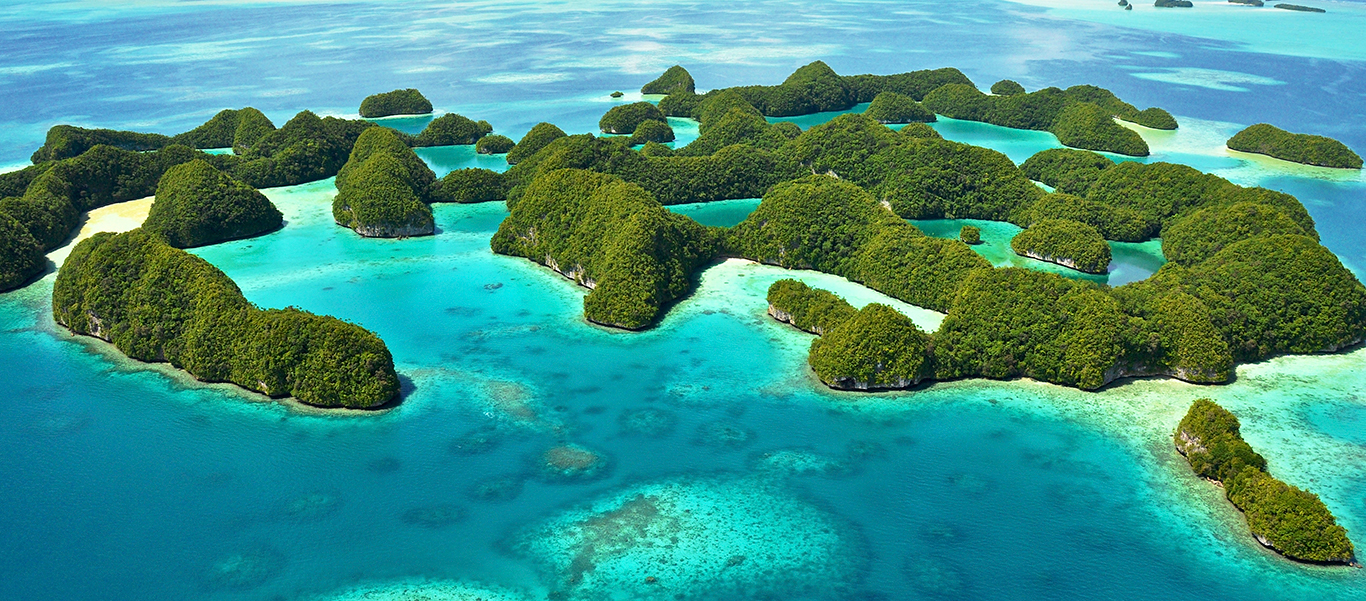Palau, Yap, the Northern Marianas & Japan
South Pacific Small Ship Cruise
The archipelagos of the western Pacific are some of the most remote and fascinating on Earth, with an astonishing diversity of cultural and natural landscapes. Covering 2,400 miles from south to north, this 17-day journey will take you from the pristine coral reefs of Palau, to the still-smoldering volcano of Miyake-jima in Japan’s Izu Archipelago; from the traditional villages of Yap, to the sobering World War II sites of the Northern Mariana Islands. Trek to Pagan’s most recent lava flow, explore Maug’s submerged caldera, and circumnavigate Tori-shima to seek out the exceedingly rare Short-tailed Albatross. Sail on the superbly designed 338-foot Silver Discoverer, expertly engineered to allow access to rugged coasts well beyond the reach of ordinary vessels, and let our expert team of naturalists guide you on this journey to some of the most isolated and unspoiled islands in the Pacific.
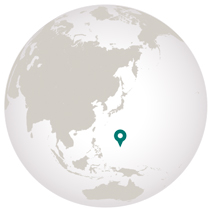
Destinations
- Travel by Air
- Travel by Road
- Travel by Boat
- Travel by Bullet Train
- Travel by Rail
- Travel by Dog Sled
- Day 1
- Day 2
- Day 3
- Day 4
- Day 5
- Day 6
- Day 7
- Day 8
- Day 9
- Day 10
- Day 11
- Day 12
- Day 13
- Day 14
- Day 15
- Day 16
- Day 17
-
Thursday, June 9: Koror
Arrive late tonight at Koror Airport, and transfer to the Palau Pacific Resort, nestled among 64 acres of lush tropical gardens and pristine white sand beach on the island of Ngerkebesang.
-
Friday, June 10: Ngerkebesang Island
Enjoy breakfast at the hotel, then head out with your Apex expedition team for a tour of the nearby Rock Islands. These mushroom-shaped, jungle-draped limestone formations are home to crocodiles, fruit bats, and a rich array of bird life including kingfishers, Reef Herons, Black Noddies, and White-tailed Tropicbirds, but their underwater offerings might be their biggest draw—with over 1500 species of fish and 700 corals, Palau is a heart of biodiversity, pumping life outwards from its blood-warm waters. Kayak among the islands’ pristine coral gardens, reef fish nurseries, hidden lagoons, marine caves, forgotten World War II sites, and ancient Palauan villages. Snorkelers will enjoy sightings of turtles, Bumphead Parrotfish, Napoleon Wrasses, Manta Rays, Lionfish, wildly colored Mandarin Fish, Clown Fish, Moray Eels, Eagle Rays, and much more. Return to the Palau Pacific Resort for a welcome dinner and overnight.
-
Saturday, June 11: Koror / Embark Silver Discoverer
Enjoy a leisurely breakfast and the morning to explore Ngerkebesang on your own, You may choose to stay at the resort and bask at its private, pristine white sand beach or walk its hiking trails. Visit the National Museum of Palau, or view more sea creatures at the impressive Palau Aquarium. At noon, head to the port to embark the Silver Discoverer, our expedition vessel for the next 15 days. Meet the rest of our outstanding expedition team and settle in for the adventure to come.
-
Sunday, June 12: Ngerkebesang Island
Make the best of your last morning in Palau by choosing from several activities: snorkel in the world-renowned Jellyfish Lake and behold the thousands of stingless golden Jellyfish that thrive in its closed ecosystem. Hike an old World War II access road, used to supply cannons and ammunition to the Japanese, and see cockatoos and Eclectus Parrots as you walk toward a century-old lighthouse perched on the tallest peak in the Rock Islands. Scuba divers may dive at one of Palau’s stellar sites, from walls with brilliant coral formations to reef corners where the current attracts sharks and rays. At noon, the Silver Discoverer will lift her anchor and head north. Be on deck as we depart—the views towards Babeldaop Island’s mangroves and terraced hills are a sight to behold as we make our way out of the cerulean lagoon.
-
Monday, June 13: Colonia
Some 275 miles northeast of Palau lies the island of Yap. Colonia, its capital, is surprisingly modern, but Yap’s traditional indigenous cultures are strong compared to other states in Micronesia. Though most Yapese live in modern structures, some villages are still organized around the traditional meetinghouses, men’s houses, and communal kitchens. Visit one such village, where you’ll also see Yap’s famous stone money, ‘Rai’—large doughnut-shaped, carved disks, usually made of Aragonite. While exploring the island, look out for the endemic Yap Flying Fox. Birders may spot the White-headed Ground Dove, Yap Cicadabird, Yap Monarch, and Olive and Plain White-eyes. For those wanting to see what lies under Yap’s waters, close to 100 miles of barrier reef provides world-class snorkeling and diving. You can see Blacktip, Whitetip and Grey Sharks and other big fish on one hand; and, on the other, tiny Ghost Pipe Fish and White Mantis Shrimp in the wire and soft corals. But perhaps most impressive are the concentrations of Manta Rays found around Yap. Dive at one of the islands’ several “cleaning stations,” and the Mantas come to you.
-
Tuesday, June 14: Ulithi Atoll
Upon entering Ulithi’s 200-square-mile lagoon, you can understand how it became the American Navy’s largest Pacific harbor during WWII. A staggering 722 naval vessels were gathered here before the invasion of Okinawa in 1945. A few of their remains can still be seen underwater. Today, step ashore and watch as some of the 800 Ulithians perform local dances, talk about Micronesian navigation, and show us their outrigger canoes. Snorkeling and diving are exceptional here, too. Ulithi’s pristine reefs are teeming with rare corals and sponges, abundant Micronesian reef fish, and more sharks than most people see in a lifetime, including huge Silvertips.
-
Wednesday, June 15: At Sea
Today you’ll cruise the Philippine Sea, heading northeast toward the Mariana Archipelago and on to the Pacific Rim of Fire. Attend lectures by our onboard experts to prepare you for the substantially different geological phenomena that lie ahead, as well as the varied culture and history of the Marianas. Be sure to join our naturalists on deck to look for whales and dolphins.
-
Thursday, June 16: Saipan
About 120 miles north of Guam lie the Northern Mariana Islands. Saipan is the largest, and home to most of the Northern Marianas’ 61,000 residents. Turquoise waters and white sands make up much of this tropical island, but it is perhaps its poignant military history for which it is best known. American forces entered the Marianas in 1944, and WWII relics—Japanese pillboxes, fuel storage tanks, bunkers—are scattered all over Saipan. WWII sites include the Last Command Post where Japanese troops made their final stand against the invading US forces, and Banzai and Suicide Cliffs, with their beautiful views and grim history—it is here that hundreds of Japanese soldiers and civilians jumped to their deaths rather than surrender. Learn more about the island’s WWII history at the American Memorial Park. Afterwards, you may choose to shed some of your melancholy with a walk through the park’s beautiful 30-acre mangrove forest.
-
Friday, June 17: Pagan
Two hundred miles north of Saipan, Pagan is an island consisting of two stratovolcanoes joined by a narrow strip of land. The island’s black sand beaches are pristine, and the active volcano, Mount Pagan, stands majestically over the scenery. A 1981 eruption forced a total evacuation to Saipan, and residents are only now trickling back. There are several projects underway to aid in the islands’ resettlement. Today, a hike through a forest and up to the crater rim will reveal a scenic view of two large lakes, Inner and Laguna. Be on the lookout for the rare animal species found on Pagan, such as the Marianas Fruit Bat, the Micronesian Megapode, and the impressive Coconut Crab—this species can weigh up to nine pounds, with a leg span of more than three feet.
-
Saturday, June 18: Maug
Maug Volcano is made up of three small islands that mark the northern, western, and eastern rims of its largely submerged mile-wide caldera. The highest point reaches only 745 feet above sea level. No eruptions have been recorded since the islands’ discovery in 1522, and the presence of poorly developed coral reefs on the lava dome suggests a long period of general quiet. East Island has the most vegetation, and has been used to grow coconut palms. Here, such rare birds as the Micronesian Megapode, Micronesian Starling and Collared Kingfisher have been found. The islands are uninhabited, and aside from the remains of a Japanese weather station and fish processing plant used during WWII, largely untouched. Today, we will explore these islands by Zodiac.
-
Sunday, June 19: At Sea
Binoculars in hand, join our naturalists on deck to watch for such seabird species as Black-footed and Laysan Albatrosses, as well as Bonin and Matsudaira’s Petrels. Marine mammal sightings could include Sperm Whale and several dolphin species. Attend informative lectures to prepare for your visit to the remote Ogasawara Islands (previously called the Bonin Islands by the British), which have earned the nickname “Galapagos of the Orient” for their unique plant and animal species, and were added to UNESCO’s World Heritage List in 2011. They are technically a part of the Tokyo prefecture, separated from the rest of Tokyo by over 600 miles and a 25-hour boat ride.
-
Monday, June 20: Chichi-jima
Chichi-jima, or Father Island, is the largest in Japan’s Ogasawara Archipelago. The mountainous island is covered in subtropical forest, white sand beaches and steep cliffs. For birding enthusiasts, Chichi-jima harbors such specials as the Brown Booby and Brown Noddy. Minami-jima is a small, uninhabited island just off Chichi-jima’s southern shore. Snorkeling within the “Marine Park Zone” around Minami-jima offers a chance to see big fish such as Dogtooth Tuna and Spotted Knifejaw, large numbers of brilliant Moontail Bullseyes, the exceedingly rare Wroughtiron Butterflyfish, Yellow-edged Lyretail, and Lavender Jobfish. The Ogasawara Islands are also the largest breeding grounds of the Green Turtle in Japan.
-
Tuesday, June 21: Tori-shima
This uninhabited volcanic island, located in the Izu Archipelago, is still active—its submerged caldera last erupted in 2002. Despite the fact that most of it consists of desolate volcanic ash and rock, Japan has named it a Natural Monument and National Wildlife Protection Area. Tori-shima means “Bird island,” and its name is apt as tens of thousands of pairs of Tristram’s Storm Petrel breed here, as well as the Japanese Murrelet and Black-footed Albatross. But Tori-shima’s Short-tailed Albatross population is its real draw. This rare species is known to breed on only four islands in the North Pacific, with close to 80% nesting here. As only scientists are granted permission to land on Tori-shima, we will circumnavigate the island while our ornithologists scan the coastline for this beautiful, and highly endangered, bird. This time of year, we may see fledging chicks. The 2002 eruption was disastrous for the Short-tailed Albatross, with recovery hampered by the presence of large numbers of Black Rats, the only remaining mammal on the island. But conservation efforts are in full effect, and about 4,000 individuals now live on Tori-shima’s ashen slopes.
-
Wednesday, June 22: Hachijo-jima
Hachijo-jima is the second largest in the subtropical Izu Shoto Island Chain. Its proximity to the mainland (180 miles from Tokyo) makes it a popular resort destination among the Japanese. It is a volcanic island with two mountains: Mihara and Hachijo-Fuji, which has the tallest peak in the entire Izu Archipelago, at 2,800 feet. For the adventurous, a hike up Hachijo-Fuji with members of the expedition team will bring you to the volcano’s rim, from which you can look down into its inner crater. The island’s Botanical Garden, located in the natural forests of a lava field, teems with birdlife, including Black Wood Pigeon, Owston’s Varied Tit, and Pleske’s Warbler.
-
Thursday, June 23: Miyake-jima
The inhabitants of this volcanic island, another in the Izu Group, face a strange danger—their volcano, Mount Oyama, has erupted six times in the last century (the latest was in 2000, forcing a mass evacuation) and is still active. Despite this, parts of the island are extremely lush, and endemic birds, such as the Izu Thrush, Ijima’s Leaf Warbler, Japanese Wood Pigeon, and Japanese Robin, abound. Join your expert ornithologist and geologist this morning on a hike to the mountain’s observation deck to take in the panoramic view, distinguished by a long stretch of black lava stretching to the horizon. See the historic Shiitori Shrine, which was partially swallowed by mudflow in the latest eruption.
-
Friday, June 24: At Sea
Recap the expedition and complete the onboard lecture presentations on the voyage toward Japan’s first port opened for foreign trade in 1859, Hakodate. This evening, as the summer sun sets over the Pacific, toast the end of our thrilling journey.
-
Saturday, June 25: Hakodate / Disembark Silver Discoverer
After breakfast, disembark Silver Discoverer and transfer to the airport for your international flights home.

